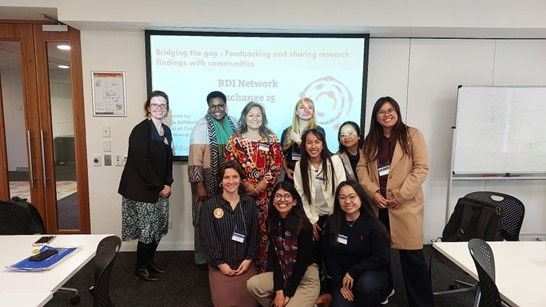Life Experience about What Makes An Effective Presentation
- Isabelle Krieg

- May 20, 2024
- 4 min read
Updated: Jan 21
How would you rate your presentation skills? It can be a simple question, yet working on this skill can be essential. Taking the extra time and effort to create an effective presentation is key in communicating a story or message - presenting well is critical to helping humans learn and connect. It can be the true make-or-break of whether the audience just listens to be polite or truly hears what is being said. This blog will quickly summarize my presentation experience and what I learned while interning with FLUSH last semester.

How Presenting Begins
On an elementary level, we first learn how to present with activities such as “show and tell”. There, we practice taking in basic information and restating it in a way others can understand. A simple activity like this builds a foundation for how to present and what information is critical for the audience to understand what you are showing. From then on, we learn and practice our presentation skills through group and individual presentations in our academic careers to teach us how to be articulate and to instate confidence in ourselves when we present.
Elements to Presentations
Whether public speaking comes naturally or not, presenting to a group of people takes preparation, practice, and courage. Anyone with experience presenting information to an audience will agree that a simple presentation can be elevated with extra effort and time. As a post-graduate who just closed a 17-year chapter of schooling and academics, I have seen what kind of preparation and steps to take in creating an effective presentation. From the feedback of professors, mentors, and fellow students, as well as my personal experience in creating and presenting projects in class, I have created a tool belt that helps me ensure that I am well-prepared and ready to deliver a compelling presentation. The two most important factors I focus on when creating a presentation are the visual “look” of the presentation and the practice I take to memorize the flow of the presentation.

Preparations - Make an Appealing Presentation
It is critical to prepare an appealing presentation - visually and orally. For example, since I was in intermediate school, my teachers have always reiterated the importance of not having too many words on each slide. Presentations rely on visual and verbal elements; part of creating an effective presentation is finding the balance between the two. It may be difficult to think about what you want to say while also trying to condense your words. Something that I find extremely helpful is first to type out everything you want to convey in the slides. After you are brain-dumped, you can go back and divide up what you want to have on your presentation slides and what you want to present verbally. I complete this process by dividing the content into either the slide (that will be shown) or the speaker notes, which will not be seen.
The 10-20-30 rule states that there should be no more than 10 slides, the presentation should last no longer than 20 minutes, and the slides should be in a minimum size of 30 points of font to keep them concise. This is a good way to ensure a balance of visual and verbal information and is a great baseline that I like to follow when condensing my information.
Practice - Get Comfortable with Your Presentation
I have learned that practice is the most important part of preparing an effective presentation. Many people may overlook or underestimate the importance of practicing, especially when they rely on the slides during the delivery. However, through personal experience, I have learned that practicing so much you’re naturally comfortable with your content and flow - becoming one with it - is a step that can’t be skipped to ensure you ace the delivery of your presentation. Run through the presentation numerous times and refine and adjust your content to accommodate the time available and ensure a smooth flow between information and slides. These practice run-throughs will also ensure you are not “surprised” by any information. The goal is to be so familiar with your presentation’s flow that you know exactly which slide and information will come next. Even seasoned presenters must practice their presentations to ensure they know them well - the best TED Talk presenters hire coaches to practice with. How else do you think they look so comfortable speaking about their subject?
Final Thoughts - Be Courageous
The last key to an effective presentation is the need to be courageous. How can you do this? Just by starting to present! Getting started is really what having courage is all about.
As a new graduate and emerging young professional, I have reflected on the last 17 years of schooling and finally understand the significance of spending so many years doing group and individual presentations. Presentations are used daily professionally—from showing your work to your boss to sharing insights with your board. We have created a two-page guide to help you easily access the steps needed to create and prepare for an effective presentation.

By learning the art of creating and presenting an effective presentation, I have enhanced my skills to enter the real world. While learning new material is one of the important elements of college, I now see that I have indirectly been preparing skills that will allow me to succeed in the professional world. Wish me luck!



Comments